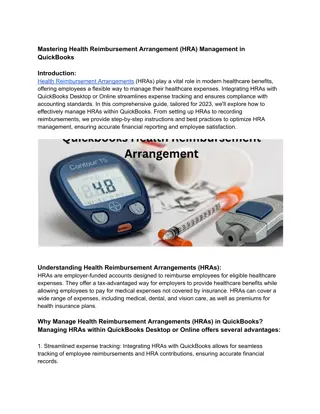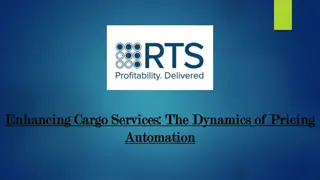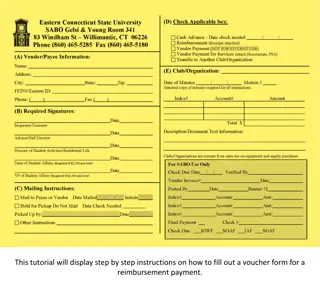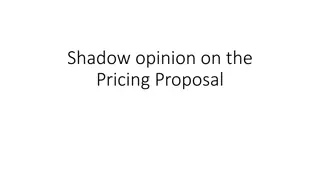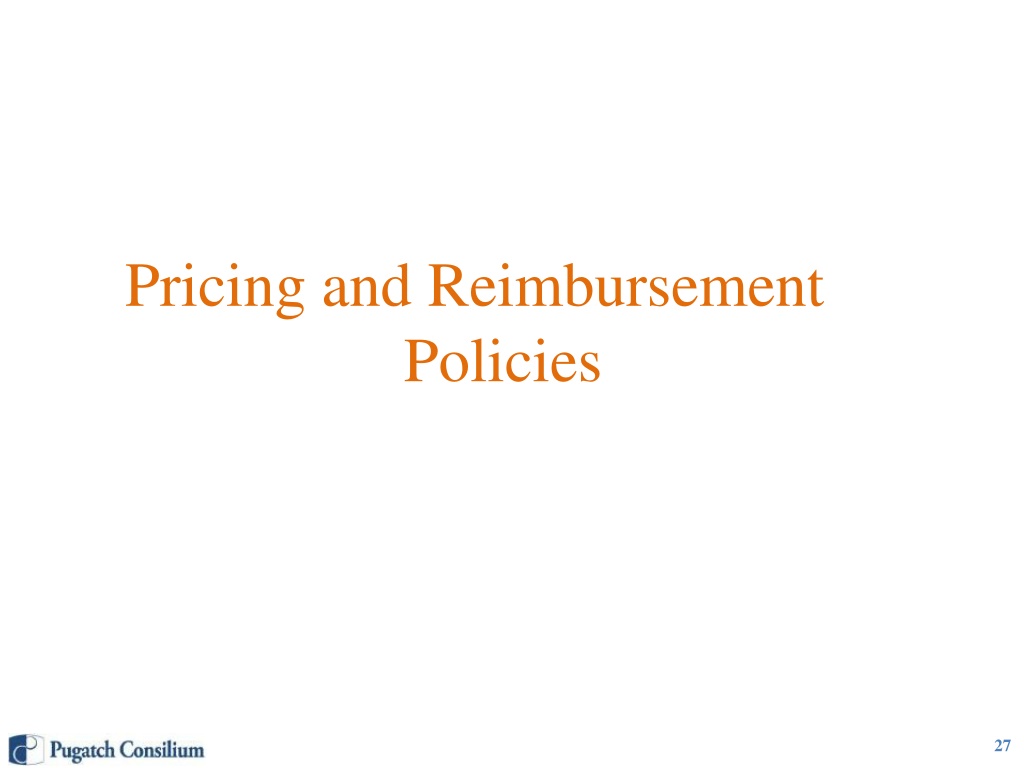
Pricing and Reimbursement Policies in Healthcare Sector
Understand the pricing and reimbursement policies for patented medicines, including the role of the Patented Medicine Prices Review Board (PMPRB) and the criteria used for setting drug prices. Explore how levels of therapeutic improvement influence price determination and learn about the process of PMPRB investigations and hearings for addressing excessive pricing. Additionally, discover the reimbursement policies for prescription drugs in Canada, where coverage is provided through both private and public plans.
Download Presentation

Please find below an Image/Link to download the presentation.
The content on the website is provided AS IS for your information and personal use only. It may not be sold, licensed, or shared on other websites without obtaining consent from the author. If you encounter any issues during the download, it is possible that the publisher has removed the file from their server.
You are allowed to download the files provided on this website for personal or commercial use, subject to the condition that they are used lawfully. All files are the property of their respective owners.
The content on the website is provided AS IS for your information and personal use only. It may not be sold, licensed, or shared on other websites without obtaining consent from the author.
E N D
Presentation Transcript
Pricing and Reimbursement Policies 27
PricingPoliciesPatentedMedicines Patented Medicine Prices Review Board (PMPRB) monitors and sets the price of patented medicines Judges whether a price is excessive for new patented drugs and existing patented drugs PMPRB regulations mandated and guided by s79-103 the PatentAct PMPRB uses 2 step process to set and review prices for new patented drug products: 1. 2. Price review Scientific review 28
ScientificReview The purpose of the scientific review process is to establish: level of therapeutic improvement of a patented drug product Level of therapeutic improvement assessed by Human Drug Advisory Panel Four categories of therapeutic improvement: 1. 2. 3. 4. Slight or No Improvement Breakthrough Substantial Improvement Moderate Improvement 29
PriceReviewProcess Level of therapeutic improvement used to determine if a price is excessive 1. Breakthrough: excessive price determined by international reference pricing (IRP); France, Germany, Italy, Sweden, Switzerland, the United Kingdom, and the United States 2. Substantial Improvement: price is excessive if higher of IRP price OR highest non-excessive price compared with drugs in therapeutic class (TCC test) Moderate Improvement: IRP and/or TCC 3. Slight or No Improvement: TCC or IRP 4. 30
PMPRBInvestigationsandHearings PMPRB can initiate investigations into excessive pricing If excessive pricing is determined, investigated party can agree to a lower price and offset any revenue based on excessive pricing (Voluntary Compliance Undertaking) If investigated party doesnot agree to lower price voluntarily PMPRB can hold hearings and ultimately order price to be lowered and double revenue amounts to be offset Hearing decisions are subject to federal judicial review 31
ReimbursementPolicies Prescription drugs covered through private and provincial/territorial public plans Covers 98% of population Federal government only provides coverage for a small number of individuals, circa. 1 million Plans vary in scope, coverage and reimbursement policies from province/territory to province/territory 32
GenericSubstitutionandPricing Substitution Interchangeability and substitution rules set at provincial level Substitution rules differ from province to province Biggest provinces including Ontario, BC and Quebec allow, but do not mandate generic substitution Saskatchewan, Manitoba, PEI, Newfoundland and Labrador mandate substitution Pricing High generic prices have resulted in provincial price caps: i. ii. Quebec: capped at highest provincial price e.g. Ontario iii. Alberta: prices capped at 45-56% of brand list price iv. British Columbia: prices capped at 35-42% of brand list price Ontario: prices capped at 25-35% of brand list price 33
FederalHTA Canadian Agency for Drugs and Technologies in Health (CADTH) conducts clinical, cost-effectiveness, and patient evidence assessments for public sector health care decision makers Common Drug Review (CDR): review of Drug Submissions from public bodies provides formulary listing recommendations to all Canadian publicly funded federal, provincial, and territorial drug plans except Quebec. Only 50% of drugs that undergo CDR recommended for reimbursement Final decision rests with provinces/territories CDR makes recommendation doesnot mandate formulary listings 34
Provincial/TerritorialHTA Provinces and territories have own HTA bodies Quebec: Agence d valuation des Technologies et des Modes d Intervention en Sant Ontario: Medical Advisory Secretariat (MAS) Alberta: Institute of Health Economics Provincial/territorial recommendations are also non-binding 35


